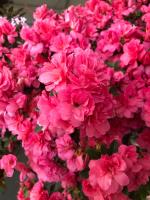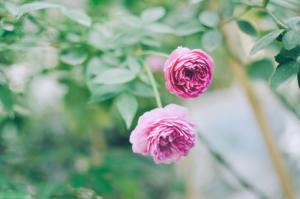Variegated Plants: An Introduction
Plants come in a wide variety of shapes, sizes, colors, and textures. Some plants have leaves or flowers that are variegated, which means they have more than one color or shade on the same plant part. These plants are highly prized by gardeners for their striking beauty and visual interest. In this article, we will explore the world of variegated plants and discover what makes them so special.
What Causes Variegation?
Variegation can be caused by several factors, including genetics, environmental conditions, and disease. Some plants have natural genetic mutations that cause them to produce variegated leaves or flowers. Other plants may develop variegation as a response to stress, such as drought or poor soil conditions. In some cases, variegation can be a sign of disease or infection, so it is important to monitor your plants closely and seek expert advice if you notice any changes in their appearance.
Types of Variegated Plants
Variegated plants come in many different shapes and sizes, from small ornamental grasses to towering trees. Some well-known types of variegated plants include:
Hostas: These shade-loving plants are beloved for their large, lush leaves that come in a wide range of variegated patterns, from simple stripes to complex mazes.
Crotons: These tropical plants have highly decorative, variegated foliage in a range of bold colors, including red, yellow, and green.
Caladiums: These colorful plants have heart-shaped leaves that are often variegated with pink, red, and white.
Japanese Maples: These small trees have delicate, finely cut leaves that can be variegated in a range of colors, from bright green to deep red.
Caring for Variegated Plants
Caring for variegated plants can be slightly different than caring for non-variegated ones. Because some variegated plants have less chlorophyll than their non-variegated counterparts, they may be less tolerant of direct sun or dry soil conditions. In general, variegated plants prefer bright, indirect light and moist, well-draining soil. They may also benefit from regular fertilization and pruning to maintain their shape and encourage new growth.
Conclusion
Variegated plants are a fascinating and beautiful addition to any garden or indoor space. By understanding their unique needs and characteristics, you can cultivate a stunning array of colorful, textured, and visually striking plants that will delight you for years to come.

 how many times do yo...
how many times do yo... how many planted tre...
how many planted tre... how many pine trees ...
how many pine trees ... how many pecan trees...
how many pecan trees... how many plants comp...
how many plants comp... how many plants can ...
how many plants can ... how many plants and ...
how many plants and ... how many pepper plan...
how many pepper plan...





























